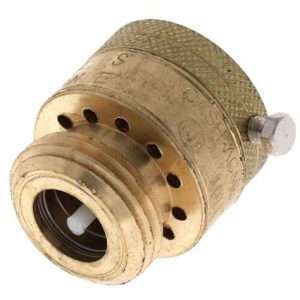Vent Stack vs Stack Vent; Learn What They Are (2023 Guide)
These two terms are used interchangeably often but there is a difference between the two. This blog will discuss using the term vent stack vs stack vent.
A plumbing system in a residential home is responsible for distributing water throughout the house and removing wastewater. The system consists of pipes, fittings, valves, drains, vents, and fixtures that are connected to the main water supply line. This main line will typically be connected to your local municipal water supply or a private well.
The water then flows through the pipes into each fixture where it can be used for various purposes such as drinking, washing dishes, doing laundry, and flushing toilets. Once the water has been used it will flow back out of the fixture and into the sewer lines where it is transferred away from the building. Vent stacks are also used in order to ensure proper air pressure in the drainage pipes and prevent any sewer gases from entering the home.
What’s the difference between vent stack vs stack vent?
A vent stack is a type of pipe used to vent sewer gases from the plumbing system. It will be connected directly to the drainage pipes and any fixture that has waste water running through it. In other words, it’s a vertical pipe that allows gases or smoke to escape from the roof.
The vent stack size will depend on the number of water fixtures in a building. In most cases, it should be at least 1 ½ inches in diameter and no less than three feet tall. The pipe should also have an air-admittance valve at the top to allow fresh air into the system and reduce pressure.
Since it is mentioned in the image above we would like to also define soil stack. What is a soil stack?
A soil stack is a venting pipe that is connected to the drainage system of a home. It’s responsible for carrying away wastewater from fixtures such as toilets and sinks, as well as releasing sewer gases into the atmosphere. The soil stack will typically be connected to other vents in order to ensure proper air pressure within the plumbing system and prevent any blockages or backups.
Vent stack clogged
A clogged vent stack can cause water to back up in the system. If this happens, it’s important to have a professional come and clean the vent before any further damage is done.
A stack vent, on the other hand, is simply an open-ended pipe that vents smoke or exhaust gases from a building. This type of pipe is often used to vent wood stoves, fireplaces, and furnaces. They can also be used to reduce pressure in the plumbing system by allowing air into the system from outside. Stack vents are usually installed on the roof of a building and should be at least 12 inches above the structure’s highest point.
A stack vent on the other hand is a type of air vent that is used to balance the air pressure between two different levels. This kind of vent will be installed near the top of the building, allowing fresh air to enter and warm or hot air to escape outside.
How many vent stacks does a house need?
The number of vent stacks a house needs will vary depending on the size and layout of the home. Most homes will require at least one stack in order to provide adequate ventilation for the plumbing system. However, larger homes may need multiple vents to maintain proper pressure in the drainage pipes.
Can a vent stack be used as a drain?
No, a vent stack should not be used as a drain. Vent stacks are used to release sewer gases from the plumbing system and provide adequate air pressure for the drainage pipes. If a vent stack is used as a drain line, it can cause serious damage to the plumbing system and lead to costly repairs in the future. Therefore, it’s best to consult a professional before trying to install any type of venting system.
How to maintenance plumbing vents?
In order to maintain your home’s plumbing systems, it’s important to inspect and clean the vent stacks regularly. Vent stacks should be inspected for any signs of wear or damage that could lead to clogs or blockages. If any damage is found, a professional plumber should be contacted to repair or replace the vent stack as soon as possible.
It’s also important to regularly check the surrounding area of the vent stacks for any obstructions that could cause a blockage. Any debris or vegetation should be removed promptly in order to keep the vents functioning properly. Lastly, it’s recommended to have a professional plumber inspect your home’s plumbing system at least once every year in order to ensure it is functioning properly.
Summary: Vent Stacks Vs Stack Vent
We hope this guide has helped to answer any questions you may have had about Vent Stacks vs Stack Vent. Be sure to contact a qualified plumber for assistance with installing and maintaining your home’s ventilation system. With the right knowledge, you can ensure your home is safe and well-ventilated. Thanks for reading! Check this article to learn more about plumbing vent types and how they work. Click here.
If you have additional questions and want to get in contact with GGR Home Inspections please send us a note, text, or call.






Pingback: Don’t Flush Your Money Away: The Value of a Sewer Scope Inspection – GGR Home Inspections